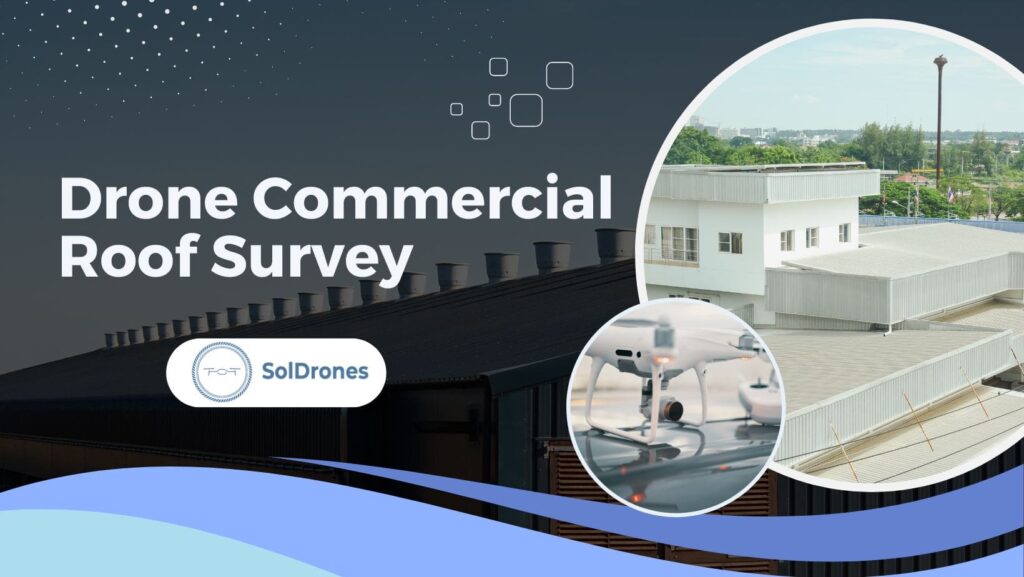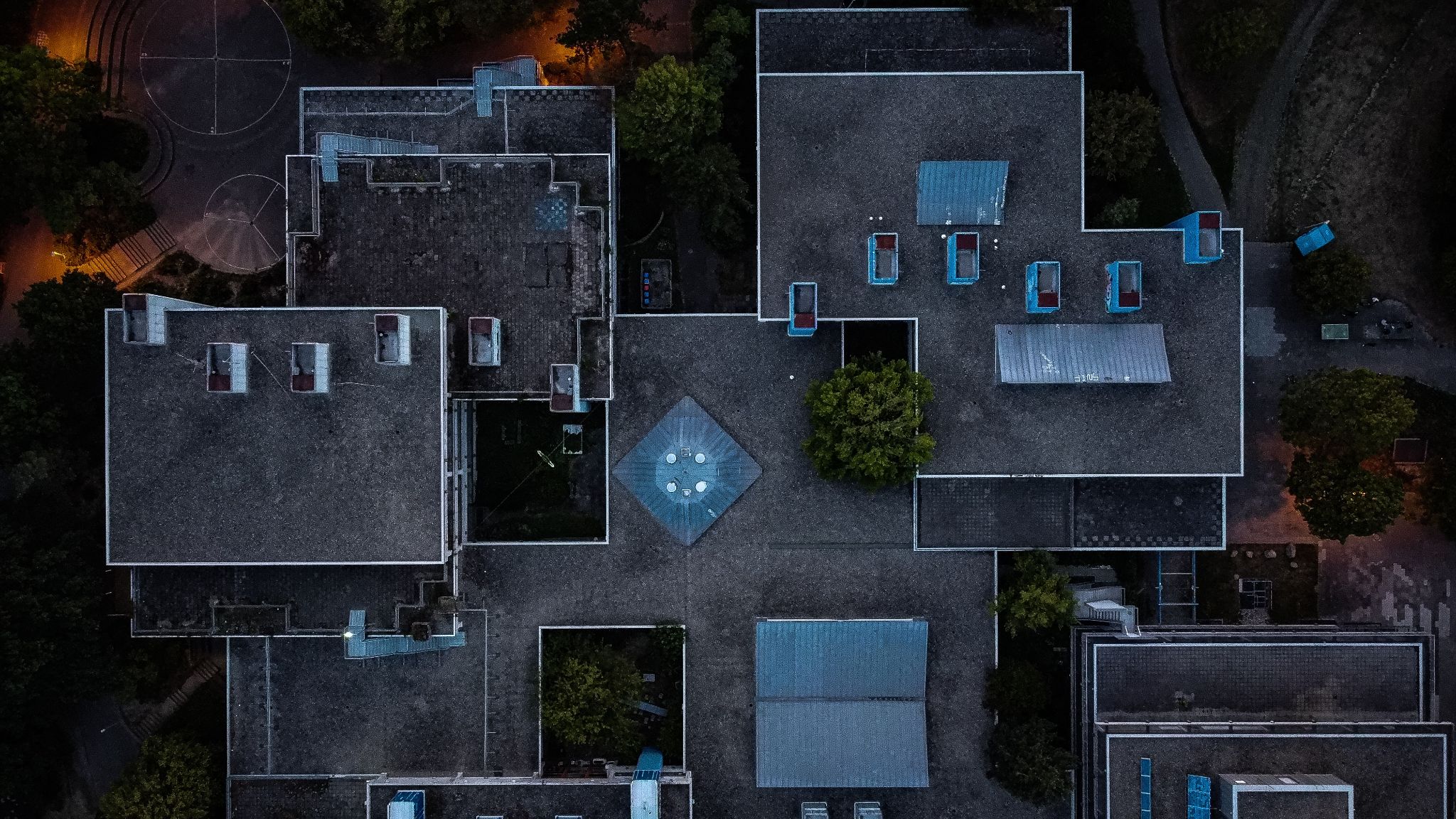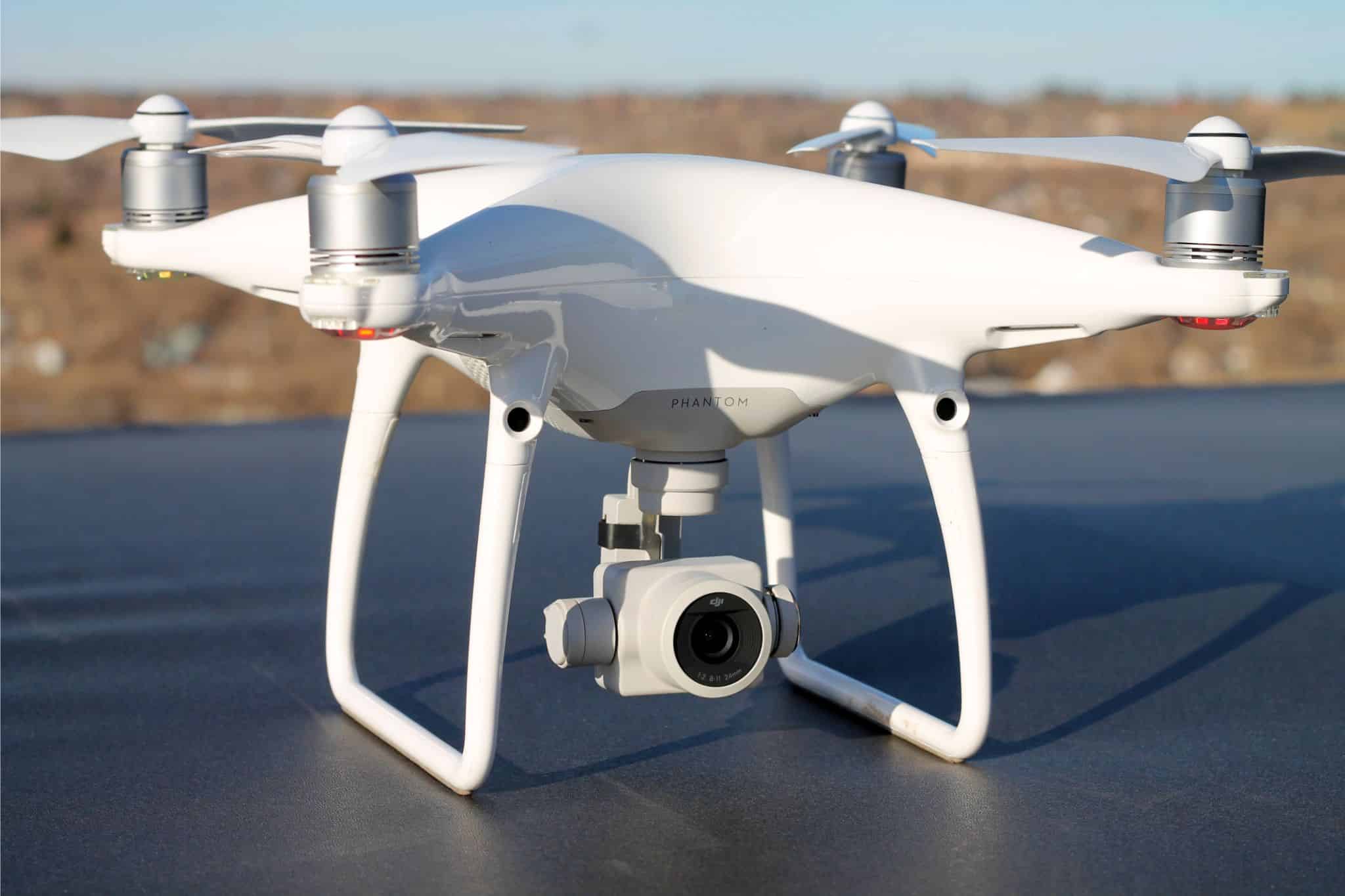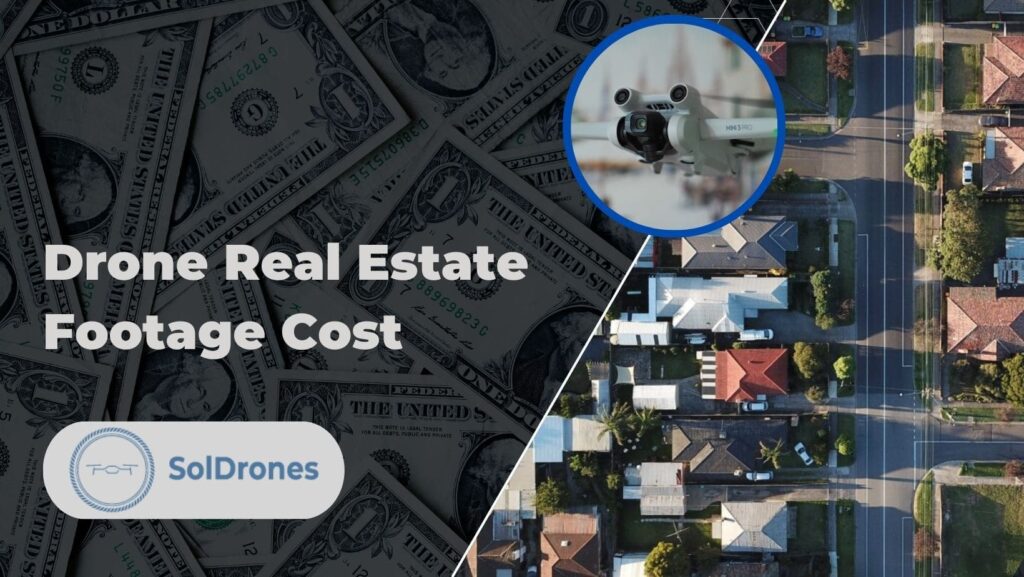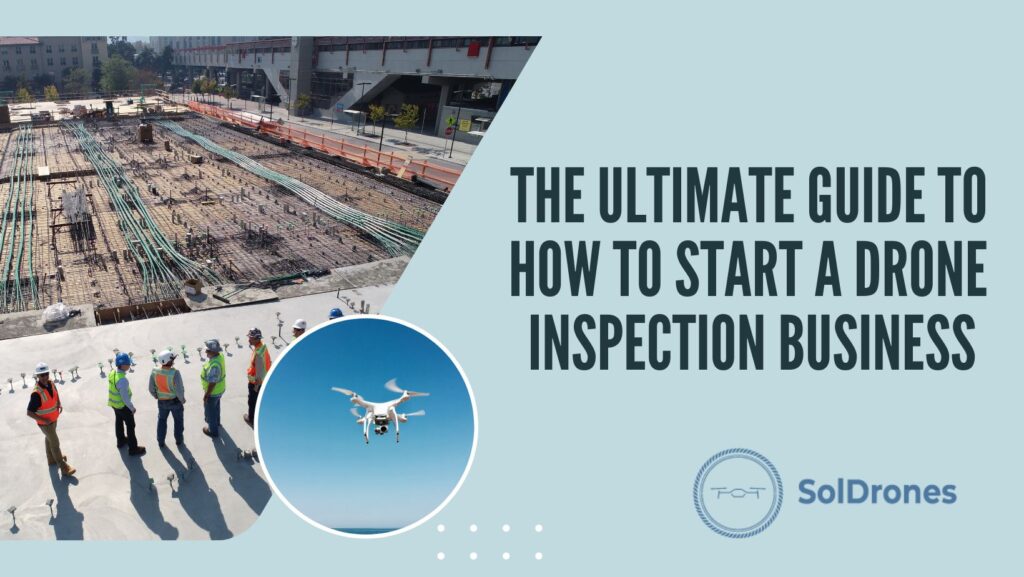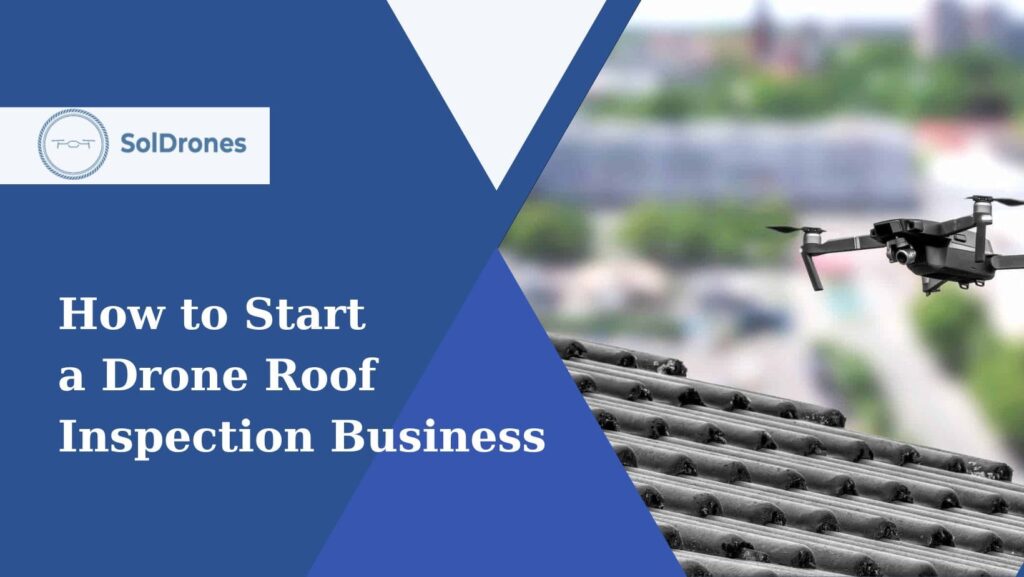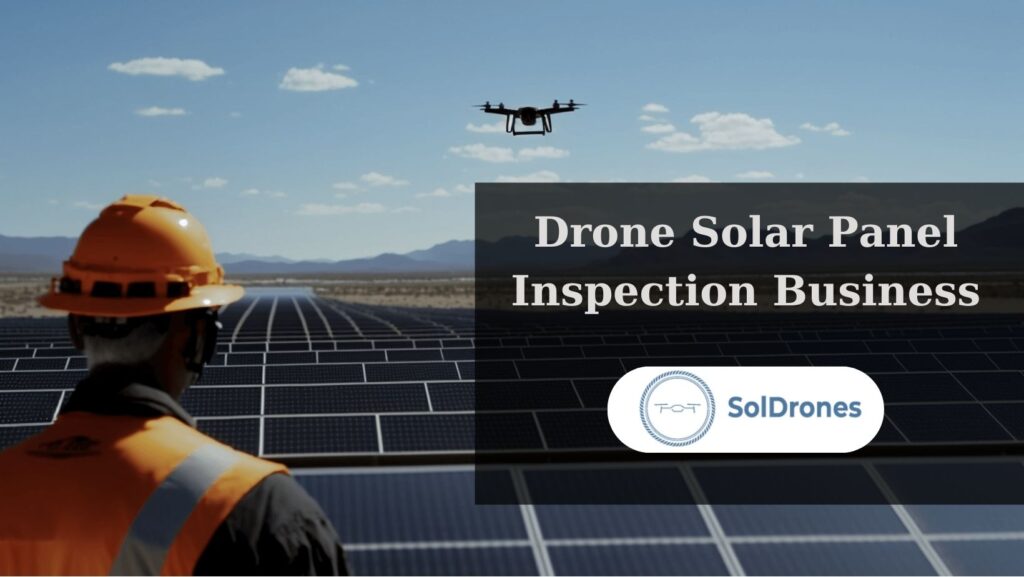Drones are no longer the future—they’re the present when it comes to roof surveys.
Unmanned aerial vehicles (UAVs) have entered the roofing scene at full force. Our team at SolDrones has extensively researched how roofers and drone pilots alike can benefit from using drones to survey commercial roofs.
We’ve created this guide to give you a better understanding of what drone commercial roof surveying is, the pros and cons, and how you can expand or start your commercial roofing business.
Article Highlights
- Drones provide more accuracy, time-efficiency, safety, and often eliminate labor intensity and potential hazards when inspecting roofs.
- Selecting the right drone involves considering weight, enterprise vs. hobby-use distinction, and autonomous capabilities, with renowned providers like DJI and Parrot leading the sector.
- Compliance with regulations is paramount for commercial drone use; pilots must obtain a Remote Pilot Certificate, register with the FAA, and understand critical airspace and equipment rules.
Traditional Roof Inspections Vs. Drone Roof Inspections
Roofing inspection has long been a staple in ensuring a building’s structural integrity. Traditionally, these inspections involved professionals scaling the edifice, armed with not much more than a ladder, clipboard, and their wits.
While this method has its merits, the dawn of drone technology has brought a revolutionary shift.
Picture this: a buzzing gadget that can swoop across commercial roofs, capturing every dent, damage, and defect, sparing humans the risk of climbing ladders and navigating treacherous roof edges.
Aspect | Traditional Roof Inspections | Drone Roof Inspections |
Safety | Risk of slips, falls, and other workplace accidents. | Reduces risks with no need for inspectors to climb. |
Accuracy | Limited to human visual capabilities. | Advanced cameras capture high-res images from multiple angles. |
Time Efficiency | Can take hours or days, especially for large commercial roofs. | Covers large areas quickly, completing surveys in hours. |
Cost-effectiveness | Requires more man-hours, equipment rentals, and scaffolding setups. | Offers savings with reduced man-hours and no need for extra equipment. |
Harnessing the power of drones for roof inspections offers a harmonious blend of traditional expertise with cutting-edge technology.
As the industry continues to advance, the choice between traditional methods and drone usage becomes clear for those aiming for precision, safety, and cost-saving solutions.
The Importance of Commercial Roof Inspections
Ignoring or neglecting roof check-ups can lead to dire consequences. Small issues, left unaddressed, can evolve into structural nightmares, compromising both safety and finances.
Water damage, mold growth, and thermal inefficiencies are just the tip of the iceberg when it comes to potential hazards. Furthermore, the costs of rectifying these damages can be exorbitant, especially when compared to the modest investments of routine inspections.
In the grand scheme of commercial building management, recognizing the importance of roof inspections is akin to understanding the heart’s role in the human body. Both are pivotal, requiring regular check-ups to ensure overall well-being and longevity.
Key Reasons for Routine Commercial Roof Inspections
Regular roof inspections for commercial buildings are not mere routine checks but crucial undertakings with multiple overarching objectives. Each reason has its unique benefits, leading to a holistic approach to roof maintenance and the longevity of the entire establishment.
- Warranty Protection and Compliance: Inspections ensure that roofs adhere to warranty terms. Failing to conduct them might lead to the voiding of manufacturer or installation guarantees.
- Weather Damage Assessment and Mitigation: Post-storm checks can highlight damage areas, allowing for timely repairs and preventing further deterioration.
- Leak Detection and Assessment: Early leak identification can circumvent structural damage, safeguarding the building’s integrity and its internal components.
- Drainage Issues and Preventive Measures: Proper drainage prevents water accumulation, which, if left unattended, can cause roof collapses or extensive moisture damage.
- Maintenance Damage Control: Regular inspections pinpoint areas requiring immediate attention, allowing for planned maintenance and reduced long-term repair costs.
- Preparatory Checks for Solar Panel Installation: Ensuring the roof’s condition is optimal before installing solar panels can prevent expensive modifications down the line.
- Preemptive Checks for Unseen Damages: Some damages aren’t evident to the untrained eye. Regular inspections uncover these hidden threats, averting potential catastrophes.
Recognizing the multitude of reasons behind roof inspections shines light on their undeniable importance in safeguarding both commercial establishments and their underlying investments.
Advantages of Using Drones for Roof Inspections
The paradigm of roof inspections has witnessed a revolutionary shift with the advent of drones. Drones have redefined the way roofing professionals assess and diagnose potential issues, bringing a slew of advantages to the table:
- Increased Accuracy and Consistency: Drones capture high-resolution images and videos, ensuring comprehensive roof assessments without any overlooked areas.
- Time-saving Aspects: Gone are the days of labor-intensive roof checks. With drones, inspections can be done in a fraction of the time, accelerating the decision-making process.
- Enhanced Safety for Roofing Professionals: Instead of navigating tricky roof terrains, professionals can remain safely on the ground, minimizing risks of falls or mishaps.
- Cost Efficiency for Both Contractors and Property Owners: Drones eliminate the need for expensive scaffolding or lifts, translating to cost savings that benefit everyone involved.
In the ever-evolving landscape of roof inspections, drones have emerged as the frontrunners, seamlessly blending efficiency with safety. Their role underscores a future where technology-driven solutions dominate the roofing industry.
How to Choose the Right Drone for Your Commercial Roof Inspection
Venturing into the realm of drone-assisted commercial roof inspections necessitates making an informed choice about the drone you invest in. Factors abound, but a few key considerations consistently rise to prominence when it comes to ensuring precision and efficiency:
- Weight and Maneuverability: A lightweight drone often promises greater agility, crucial for navigating complex roofing structures.
- Enterprise vs. Hobby-use Drones: While hobby drones can capture stunning visuals, enterprise-level drones are engineered for professional tasks and come equipped with robust features suitable for commercial inspections.
- Autonomous Flight Path Capabilities: A drone with autonomous flight capabilities can follow pre-set routes, ensuring comprehensive and systematic roof coverage.
- Recommendations and Top Drone Providers: Leading the pack in the commercial sector are names like DJI’s Mavic series and Parrot’s Anafi USA, renowned for their balance of functionality and user-friendliness.
UAVisuals created an amazing video that overviews some of the best drones to consider using when inspecting buildings and roofs.
Video Credit: UAVISUALS
Making a prudent choice in your drone investment can set the stage for consistent and high-quality roof inspections. As the saying goes, “The right tool for the right job,” and in this realm, that tool flies above, capturing insights like never before.
Regulations and Compliance for Commercial Drone Use
Embarking on the journey of drone-powered roof inspections isn’t solely about selecting the right equipment; it’s also about adhering to a well-defined framework of regulations. Proper compliance ensures safety, legitimacy, and professionalism in the skies:
- The Importance of a Remote Pilot Certificate: Before taking flight for commercial purposes, obtaining a Remote Pilot Certificate is essential. It’s a testament to the drone pilot’s competence and understanding of operational and safety norms.
- FAA Registration and the Part 107 Test Overview: All commercial drones weighing between 0.55 and 55 pounds must be registered with the FAA. Additionally, aspirants must clear the Part 107 test, a comprehensive examination covering essential drone knowledge and safety procedures.
- Airspace Rules and Drone Equipment Regulations: Operating drones requires respect for airspace classifications, with certain zones restricted or needing prior authorizations. Moreover, equipment regulations may dictate specific requirements, such as anti-collision lighting for nighttime operations.
Navigating the world of drone inspections means more than mastering flight—it’s about understanding and adhering to the rules that keep our skies orderly and safe.
Commercial Roof Inspection Checklist
A structured approach is vital when embarking on a commercial roof inspection using drones. It ensures thoroughness, consistency, and the attainment of valuable insights. Here’s a concise step-by-step guide for a seamless inspection:
- Initial Site Assessment: Before flying, familiarize yourself with the property. Identify potential hazards, note key areas of concern, and establish the inspection’s primary objectives.
- Choosing the Right Drone and Equipment: Based on the site’s nuances, select a drone that offers the required weight, maneuverability, and features. Consider camera specifications for high-resolution imagery.
- Setting Up an Autonomous Flight Path: Modern drones enable pilots to set predetermined paths, ensuring every inch of the roof gets coverage without missing a spot.
- Capturing Essential Data: While in flight, gather high-quality images, videos, or thermal data, focusing on areas that typically exhibit wear, damage, or other issues.
- Analyzing Data Using Mapping Software: Post-flight, use specialized software to process the collected data, pinpointing anomalies and potential problems.
- Reporting and Next Steps: Compile your findings into a detailed report, complete with imagery and recommendations, which then becomes a roadmap for necessary repairs or maintenance.
Equipped with this checklist, roofing professionals and property managers can ensure that every drone-powered roof inspection is comprehensive and value-driven.
Cost Implications of Drone Roof Inspection
The integration of drones into roof inspections has presented an intriguing shift in cost structures for contractors and property owners alike. Let’s explore the financial dynamics of this evolution:
- Overview of Roof Inspection Cost: Investing in a quality drone and associated equipment often carries an upfront cost. However, this is balanced out by fewer manual labor hours, reduced equipment rentals (like cherry pickers or scaffolding), and faster turnaround times.
- Comparing Costs with Traditional Roof Inspection Methods: Traditional methods often involve hiring multiple personnel, equipment rentals, and extended durations. While a drone inspection might seem pricier initially, the efficiency and detail it provides often translate to substantial savings in the long run.
- Long-term ROI for Contractors Using Drone Technology: A roofing contractor embracing drone technology can complete more inspections in less time, minimizing risks and liabilities. Over time, this efficiency results in considerable returns on investment, not just in monetary terms but also in enhanced reputation and client trust.
While drones present an initial investment, their integration into roofing inspections holds the promise of significant cost savings, improved efficiency, and a modernized approach to property management.
The Role of Roofing Contractors and Professionals
Roofing contractors and professionals stand at a pivotal crossroads, where traditional methods meet the technological prowess of drone technology. This intersection brings forth opportunities that can redefine the future of roofing inspections and services:
- Benefits from Drone Technology: For roofing contractors, drones bring to the table unparalleled efficiency. Not only can they quickly survey large areas, but they also offer high-resolution imagery that captures even minute defects, transforming the way assessments are made.
- Training and Certifications Needed: Embracing this technology requires upskilling. Contractors should seek drone piloting certifications and specialized training in roof inspections to ensure they’re leveraging drones to their full potential.
- Ensuring Quality Service and Customer Satisfaction: Drones can enhance the client experience, offering visual proof of findings, transparent reports, and quicker service. For the customer, this means a faster resolution to their concerns and confidence in the thoroughness of the inspection.
In an age where efficiency and precision are paramount, roofing professionals who harness the power of drones position themselves as industry leaders, offering clients an innovative, high-quality service that stands out in the marketplace.
Residential Vs. Commercial Roof Inspections: Key Differences
While the principles of roof inspections remain consistent, the dynamics of residential inspection and commercial roof inspection introduce nuanced differences that demand distinct approaches:
| Aspect | Residential Roof Inspections | Commercial Roof Inspections |
| Scale and Scope | Smaller and simpler in design. | Larger and more complex, requiring meticulous coverage. |
| Equipment Considerations | Focus on maneuverability and ease of use in residential settings. | Need for advanced drones to navigate diverse industrial structures. |
| Regulatory Requirements and Considerations | Typically more lenient regulations. | Stricter safety regulations and airspace restrictions. |
Understanding these distinctions is crucial for roofing professionals to tailor their approaches accordingly, ensuring comprehensive and effective inspections regardless of the context.
Final Thoughts
In the ever-evolving landscape of property maintenance and inspection, the utilization of drone technology has emerged as a game-changer. From commercial roof inspection cost considerations to the breadth of residential assessments, the advantages of a professional roof inspection are undeniable.
Drones offer unparalleled accuracy, time efficiency, and cost-effectiveness, all while ensuring the safety of both professionals and properties. When evaluating the integrity of roof decking or assessing the condition of an asphalt shingle roof, these unmanned aerial vehicles are indispensable. By embracing this innovative approach, roofing contractors and property owners can secure a stronger ROI, reduce risks, and enhance overall building integrity.
Regular roof inspections, driven by the powerful capabilities of drones, empower us to proactively address weathering, detect a roof leak, and mitigate potential hazards before they escalate. The seamless integration of autonomous flight paths, advanced mapping software, and precise data capture transforms routine inspections into strategic decision-making tools.
As the drone industry continues to evolve, it’s evident that professionals who harness these technologies stand to redefine the way we approach roofing inspections, ultimately contributing to safer, more efficient, and cost-effective property management practices.
FAQs
How do drone roof inspections compare to traditional methods?
Drone inspections offer enhanced safety, accuracy, and time efficiency compared to manual methods. Drones capture detailed data from unique angles, minimizing risks for professionals and property owners.
What are the benefits of using drones for commercial roof inspections?
Drones provide increased accuracy, time savings, improved safety, and cost-effectiveness. They empower contractors and property owners to make informed decisions based on precise data.
What role do regulations play in commercial drone use for inspections?
Compliance with regulations is crucial. Drone pilots need a Remote Pilot Certificate, FAA registration, and knowledge of airspace rules. Abiding by regulations ensures safe and legal operations.
How can I choose the right drone for a roof inspection?
Consider factors like weight, maneuverability, enterprise vs. hobby-use drones, and autonomous flight path capabilities. Top drone providers offer specialized models for roof surveys.
What are the cost implications of using drones for roof inspections?
While initial investment may be a concern, drones provide long-term ROI through reduced labor costs and increased inspection capabilities. Comparatively, traditional methods may involve higher expenses.

